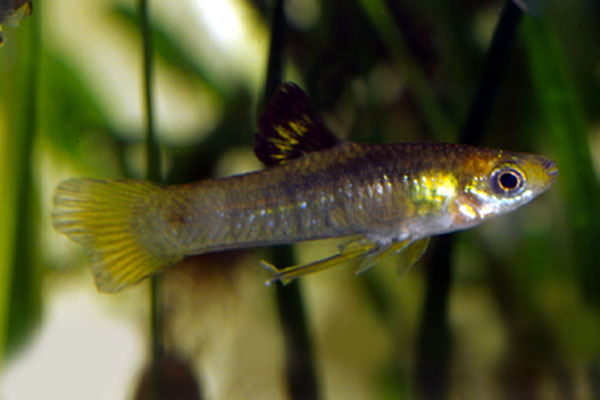| Poeciliidae (Poeciliids), subfamily: Poeciliinae |
| 4.5 cm SL (male/unsexed) |
|
pelagic; freshwater; pH range: 7.19999980926514; dH range: 3; depth range 10 - 20 m |
| Central America: Lake Nicaragua on the Atlantic drainage to the Río Parismina and the Río Tenorio drainage on the Pacific slope (Ref. 36880). Costa Rica and Nicaragua. |
|
Body thin, translucent and yellowish. Base of the first dorsal rays with a black blotch; in males the posterior edge of the dorsal fin is also black and sometimes the remainder of the fin is brilliant yellow. The males and young have 5 to 10 black bars on the side which are diffuse or absent in females. The gonopodium is asymmetrical and either dextral or sinistral; the apex of which in mature males bears a long upper projection and swelling below, both of which are membranous (Ref. 36880). |
| Inhabits waters of all velocities, between 35 and 590 m elevation, with temperatures of 21 to 37°C. Lives in small groups in brooks, creeks and along the shorelines of rivers where it feeds on detritus, filamentous algae, aquatic insects and ooze. Probably reproduces throughout the year (Ref. 36880). |
|
Vulnerable (VU); Date assessed: 12 August 2019 (B1ab(iii)) Ref. (130435)
|
| harmless |
Source and more info: www.fishbase.org. For personal, classroom, and other internal use only. Not for publication.

